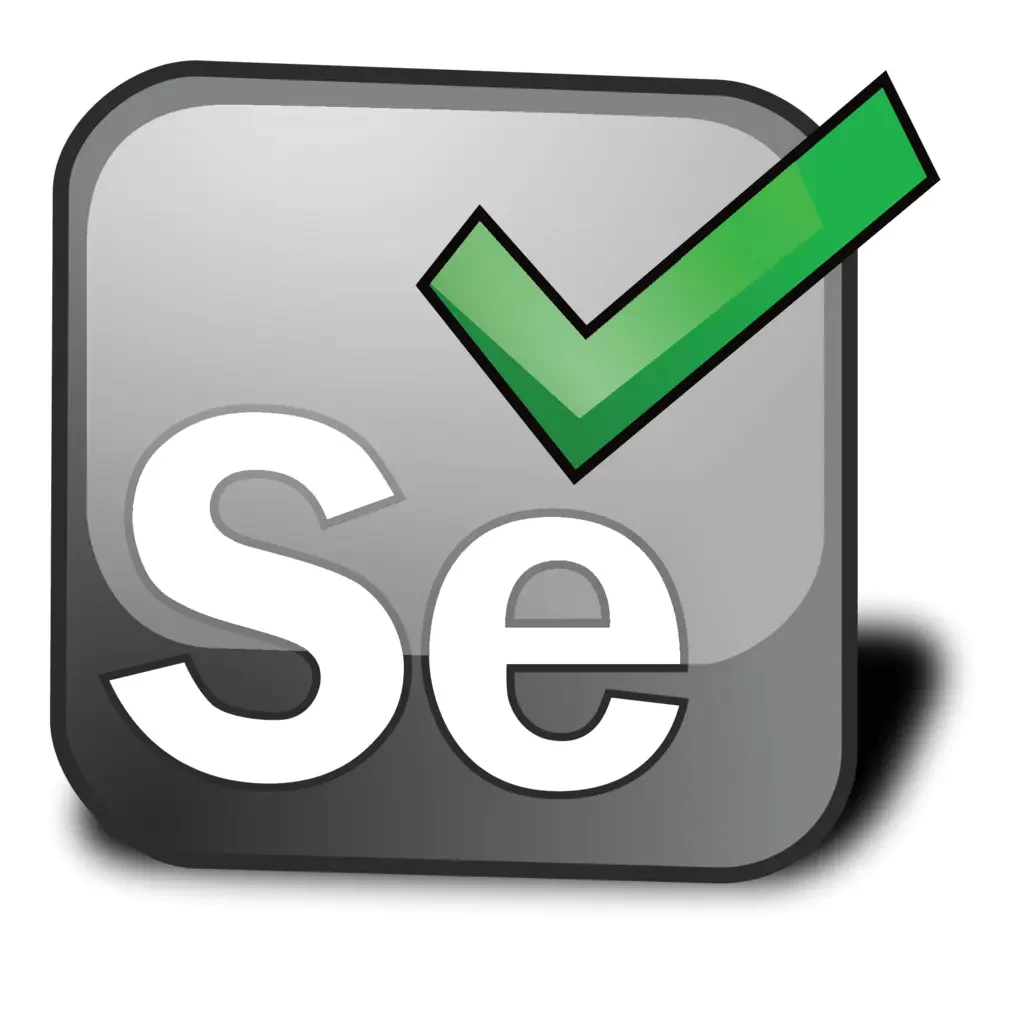Automated testing has become an important part of modern software development. It helps ensure that software works as expected and saves time and resources in the long run. One of the most popular tools for automated testing is Selenium.
What is Selenium?

Selenium is an open-source software suite that provides tools for automated web application testing. It supports multiple programming languages, including Java, Python, and C#, and runs on a variety of platforms, including Windows, macOS, and Linux. Selenium lets you automate actions in a web browser, such as clicking buttons, typing text, and navigating between pages, making it a great tool for testing web applications.
Why Use Selenium?
There are several reasons to use Selenium for automated testing.
- First, it’s open-source, which means it’s free and has a large community of users and contributors who are constantly improving and updating the tool.
- Second, it supports multiple programming languages, which means you can use the language you’re most familiar with.
- Third, it supports a variety of browsers, including Chrome, Firefox, and Safari, so you can test your application on the browsers your users will use.
How To Setup Selenium Working Environment?
Setting up the environment for Selenium can be a bit of a challenge, especially if you’re new to programming and automation testing. But don’t worry, with this step-by-step guide, you’ll be able to easily install Java and get ready to start using Selenium in no time
Step 1: Installing Java
Following are the detailed steps that help you to install java on your machine:
- Download Java Development Kit (JDK):
The first step in installing Java is to download the Java Development Kit (JDK) from the official website of Oracle.
You can find the latest version of JDK at https://www.oracle.com/java/technologies/javase-downloads.html.
Simply click on the “Download” button to start the download process. - Install Java Development Kit (JDK):
Once the download is complete, double-click on the setup file to start the installation process. Follow the on-screen instructions to install Java on your machine. - Set JAVA_HOME Environment Variable:
The environment variable JAVA _HOME is used by the Java virtual machine to find the Java runtime environment. To set the JAVA _HOME variable, you must access the environment variables in your system.- On Windows:
- Right-click on the Computer icon and select Properties
- Click on Advanced system settings
- Click on the Environment Variables button
- In the System variables section, scroll down and look for JAVA_HOME
- If JAVA_HOME is not listed, click the New button and add a new variable with the name JAVA_HOME and the value set to the location of your JDK installation (e.g. C:\Program Files\Java\jdk19)
- On Mac OS or Linux:
- Open a terminal window
- Type nano ~/.bash_profile and press Enter
- Add the following line to the file: export JAVA_HOME=<location of JDK installation> (e.g. export JAVA_HOME=/Library/Java/JavaVirtualMachines/jdk19.jdk/Contents/Home)
- Save and close the file
- Restart the terminal for the changes to take effect
- On Windows:
- Verify Java Installation:
To verify that Java is installed correctly, open the Command Prompt and enter the following command:
java -versionIf Java is installed correctly, you should see the version of Java displayed on the screen.
Step 2: Downloading the Selenium WebDriver
- Go to the Selenium official website at https://www.selenium.dev/downloads/
- Select the language you want to use for writing your tests. (Java, Python, C#, etc.)
- Download the latest version of the Selenium WebDriver server.
Step 3: Integrating Selenium with Eclipse
Once you have the above prerequisites in place, you’re ready to start setting up your Selenium environment in Eclipse. Here’s what you’ll need to do:
- Download and install Eclipse:
- You can download the latest version of Eclipse from https://www.eclipse.org/downloads/
- Make sure to choose the correct version for your operating system.
- Install the Selenium Java Client Library:
To do this, you’ll need to add the Selenium Java Client Library to your Eclipse project. You can do this by following these steps:- In Eclipse, select Help > Eclipse Marketplace.
- In the Eclipse Marketplace dialog, search for “Selenium”.
- Select the “Selenium Java Client Driver” and click the “Go to Installation” button.
- Follow the on-screen instructions to complete the installation.
- Create a new project in Eclipse:
To do this,- select File > New > Java Project.
- Give your project a name and click the “Finish” button.
- Add the Selenium Java Client Library to the project’s classpath:
To do this, you’ll need to follow these steps:- Right-click your project in Package Explorer and select Properties.
- In the Properties dialog, select Java Build Path.
- Click the “Libraries” tab and then the “Add External JARs” button.
- Navigate to the location where you installed the Selenium Java Client Library and select the JAR file.
Step 4: Installing the Drivers for Browsers
You have to download all the browser drivers and store all of them in a Single folder.
Chrome: https://chromedriver.chromium.org/downloads
Firefox: https://github.com/mozilla/geckodriver/releases
Edge: https://developer.microsoft.com/en-us/microsoft-edge/tools/webdriver/
Now add the folder path in the environment variable
- Go to Environment Variable
- Check System variable>path
- Add the new path of the folder
- Now click on apply
Writing Automated Tests using selenium
we will discuss the following key aspects of writing automated tests using Selenium:
- Writing Your First Test Case:
- Start by installing the Selenium WebDriver and the relevant language bindings for your programming language of choice(See the above steps).
- Choose a browser to run your tests on, such as Chrome, Firefox, or Safari.
- Write your first test case using the WebDriver API and a testing framework like JUnit or TestNG.
- Make sure to include assertions to verify that the expected behavior is happening on the page.
- Run your test and check the results.
- Designing Effective Test Cases:
- Plan your test cases by breaking down the application’s functionality into individual testable parts.
- Focus on testing the critical paths of the application and key features that users interact with.
- Write tests that are easy to understand, maintain, and modify as the application changes.
- Avoid over-testing by focusing on what needs to be tested and what can be safely ignored.
- Use test data that is meaningful and relevant to the test case.
- Debugging Test Cases:
- Start by understanding the error messages produced by the test framework
- Use tools like the browser’s dev tools or log files to debug the issue
- Write clear and descriptive error messages to make it easier to identify the problem
- Don’t be afraid to add print statements or log messages to help diagnose the issue
- Keep your tests simple and focused to make debugging easier and faster.
Here is the simple program to start Automation Testing using Selenium+Java
import org.openqa.selenium.WebDriver;
import org.openqa.selenium.chrome.ChromeDriver;
public class Firstseleniumprogram{
public static void main(String[] args) {
WebDriver driver = new ChromeDriver();
driver.get("https://www.google.com/");
System.out.println("Title: " + driver.getTitle());
driver.quit();
}
}Integrating Selenium with Test Frameworks
As a software tester, you know how important it’s to have reliable and efficient test automation frameworks. And if you work with Selenium, you’ll be happy to hear that it integrates easily with various testing frameworks. You’ll learn how to integrate Selenium with popular testing frameworks like JUnit, TestNG, and Cucumber.
- JUnit integration with Selenium:
JUnit is a widely used testing framework in Java, and it’s also the preferred testing framework for many Selenium users. To integrate Selenium with JUnit, you need to install the JUnit library and the Selenium Java client library. Then, you can create a test class that extends the JUnitTestCaseclass and use the Selenium API to write your test cases.
Here’s a simple example of a JUnit test case using Selenium:
import org.junit.Test;
import org.openqa.selenium.By;
import org.openqa.selenium.WebDriver;
import org.openqa.selenium.Chrome.ChromeDriver;
public class SeleniumJUnitTest {
@Test
public void testGoogleSearch() {
// Create a new instance of the Chrome driver
WebDriver driver = new ChromeDriver();
// Navigate to Google
driver.get("http://www.google.com");
// Enter a search query
driver.findElement(By.name("q")).sendKeys("Selenium");
// Submit the search form
driver.findElement(By.name("btnK")).submit();
// Close the browser
driver.quit();
}
}- TestNG integration with Selenium:
TestNG is another popular testing framework in Java that’s often used with Selenium. It offers more advanced features than JUnit and is more flexible, making it a great choice for complex testing projects. To integrate Selenium with TestNG, you need to install the TestNG library and the Selenium Java client library. Then, you can create a test class that includes the@Testannotation and use the Selenium API to write your test cases.
Here’s a simple example of a TestNG test case using Selenium:
import org.testng.annotations.Test;
import org.openqa.selenium.By;
import org.openqa.selenium.WebDriver;
import org.openqa.selenium.Chrome.ChromeDriver;
public class SeleniumTestNGTest {
@Test
public void testGoogleSearch() {
// Create a new instance of the Chrome driver
WebDriver driver = new ChromeDriver();
// Navigate to Google
driver.get("http://www.google.com");
// Enter a search query
driver.findElement(By.name("q")).sendKeys("Selenium");
// Submit the search form
driver.findElement(By.name("btnK")).submit();
// Close the browser
driver.quit();
}
}- Cucumber integration with Selenium:
Cucumber is a behavior-driven development (BDD) testing framework that’s often used in combination with Selenium. BDD is a software development approach that emphasizes collaboration between developers, testers, and business stakeholders.
Cucumber allows you to write test cases in plain English, making them more readable and understandable for non-technical stakeholders. To integrate Selenium with Cucumber, you need to install the Cucumber library, the Selenium Java client library, and a couple of other dependencies.
Here’s a simple example of a Cucumber test case using Selenium:
Feature: Google Search
As a user
I want to search for Selenium on Google
So that I can find information about Selenium
Scenario: Search for Selenium on Google
Given I am on the Google search page
When I search for "Selenium"
Then the first result should contain the word "Selenium"
@Given("I am on the Google search page")
public void navigateToGoogle() {
// Create a new instance of the Chrome driver
WebDriver driver = new ChromeDriver();
// Navigate to Google
driver.get("http://www.google.com");
}
@When("I search for {string}")
public void searchFor(String query) {
// Enter a search query
driver.findElement(By.name("q")).sendKeys(query);
// Submit the search form
driver.findElement(By.name("btnK")).submit();
}
@Then("the first result should contain the word {string}")
public void checkResult(String expectedResult) {
// Verify that the first result contains the expected word
assertTrue(driver.findElement(By.cssSelector("#rso > div:first-child h3")).getText().contains(expectedResult));
// Close the browser
driver.quit();
}
Best Practices for Selenium Automation
Selenium automation has become an essential part of software testing, helping organizations streamline their testing processes and improve their software quality. However, for automation to be effective, it is important to follow best practices that ensure efficient, reliable, and accurate results.
Here are some of the best practices for Selenium automation that you should follow:
- Use the Right Selenium Tool for the Job:
Selenium comes in several different tools, each with its strengths and weaknesses. You should choose the right tool based on your specific needs and the features that your project requires.- For instance, if you need to test a complex application with multiple UI components, Selenium WebDriver is the right tool for you.
- On the other hand, if you need to test a simple application with a limited number of UI elements, Selenium IDE may be a better fit.
- Choose the Right Testing Framework:
To get the most out of Selenium, you should choose a testing framework that matches your specific needs. Some popular testing frameworks include JUnit, TestNG, and Cucumber.- JUnit is a simple testing framework that is ideal for small projects.
- TestNG is a more powerful framework that offers advanced features like parallel testing and data-driven testing.
- Cucumber is a behavior-driven development framework that is ideal for testing applications with complex business logic.
- Write Maintainable and Scalable Test Cases:
When writing your test cases, make sure that they are easy to maintain and scalable.- This means that you should write tests that are easy to understand, debug, and modify as your application changes.
- You should also ensure that your tests are scalable so that they can accommodate the growth of your application
- Use Page Object Model (POM):
The Page Object Model (POM) is a design pattern that helps you write maintainable and scalable test cases.- It involves creating a separate class for each page in your application and defining the elements and actions on that page in that class.
- This makes it easier to maintain and update your test cases as your application changes.
- Make Use of Wait Statements:
In Selenium, wait statements are used to wait for elements to load on a page before executing the next step in your test.
There are two types of wait statements: implicit waits and explicit waits.- Implicit waits are global waits that apply to all elements on a page.
- Explicit waits are more precise and allow you to wait for specific conditions to be met before moving on.
- Handle exceptions and unexpected situations:
In automation, things don’t always go as planned. For example, a page may take longer to load than expected, or an element may not be present on a page. To handle these situations, it’s important to add exception handling to your scripts. This will ensure that your scripts don’t fail and that you’re notified if something goes wrong. - Use descriptive test names:
It’s important to give your tests descriptive and meaningful names so that it’s clear what each test is intended to do. This makes it easier to understand the purpose of each test and helps to ensure that your tests are maintainable and easy to understand. - Make use of the right locators:
Locators are the identifiers that Selenium uses to locate elements on a page.- It’s important to use the right locators, such as ID, Name, ClassName, TagName, or CSS selector, to ensure that your tests are reliable and efficient.
- Avoid using dynamic locators, such as XPath, whenever possible, as they can be slow and unreliable.
- Run your tests in different browsers and environments:
It’s important to test your application in different browsers and environments to ensure that it works as expected for all users. Selenium provides support for multiple browsers, including Chrome, Firefox, and Internet Explorer, so make sure to test your application in each of these browsers to ensure that it works as expected.
To summarize, Selenium is the ultimate solution for anyone looking to streamline their software testing process. With its intuitive design and powerful functionality, Selenium makes it easy to automate a wide range of testing scenarios and ensure that your software is functioning as it should. Whether you’re new to automated testing or a seasoned pro, this guide has everything you need to get started and take your testing game to the next level. So why wait? Start exploring Selenium today and revolutionize the way you approach software testing!
Learn all about Software Automation Testing: A Comprehensive Guide to Enhancing Your Software Quality

